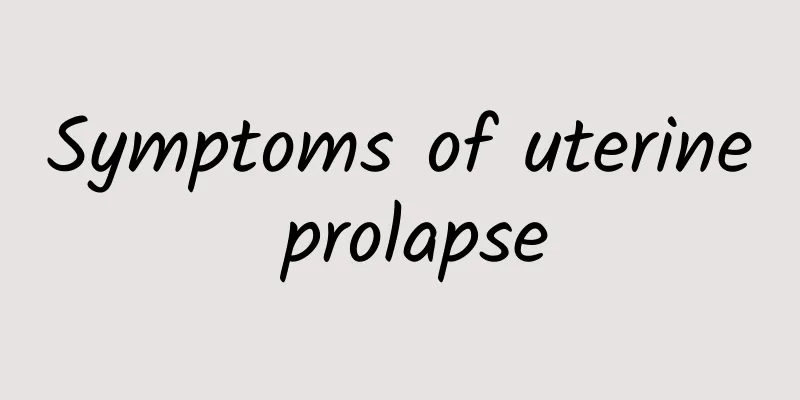What should I do if I have uterine fibroids during pregnancy? How should I treat uterine fibroids during pregnancy?

|
Pregnancy: To see whether the fibroids grow larger as the uterus grows. Uterine fibroids are tumor-like growths in the uterus. 30% to 50% of women over 30 years old may be found to have uterine fibroids. Fibroids vary in size and location, so problems during pregnancy may also vary. Since uterine fibroids tend to grow larger in the second trimester, if the size of the fibroids exceeds 5 cm in early pregnancy, you should pay attention to the risk of miscarriage and premature birth. Some cases also require rest. In addition, if there are fibroids near the placenta, please pay more attention to whether the placenta functions normally. Delivery: If the fibroids are large or blocking the birth canal, a cesarean section may be needed. Uterine fibroids can grow in many places, but only when they grow in the cervix will they affect delivery. Although this is rare, once it happens, a cesarean section is required for a smooth birth. Natural delivery or cesarean section should be determined after 37 weeks of pregnancy by observing the location and size of the uterine fibroids. If there are uterine fibroids, the uterus is likely to not contract well during delivery, and postpartum bleeding may occur. Postpartum: Uterine fibroids themselves will shrink. After delivery, the uterus will slowly shrink to the same size as before pregnancy, but the presence of uterine fibroids will hinder the contraction of the uterus. Therefore, you should pay attention to uterine contraction for a period of time after delivery. In addition, most uterine fibroids will automatically shrink after childbirth. So there is no need to rush to remove them. But be sure to have regular health checks. Precautions for pregnant women with uterine fibroids: 1. After pregnancy, you must undergo regular pregnancy checks as required by your doctor, increase the frequency of perinatal care, and pay more attention to changes in your body. 2. Avoid fatigue and rest in bed if necessary. 3. Let go of your psychological burden and maintain a comfortable mood. Because most patients with uterine fibroids can get pregnant normally to full term. 4. Increase nutrition, especially eat more blood-enriching foods, such as wolfberry, dates, shepherd's purse, spinach, etc., and be prepared for bleeding. 5. Strictly control sexual life to minimize the possibility of miscarriage and infection. 6. Prepare for a cesarean section. |
Recommend
Three dietary porridge recipes for primary amenorrhea
Patients with primary amenorrhea can be assisted ...
Can uterine coldness lead to adenomyosis?
Uterine coldness is a common symptom in women. Ut...
What harm does dysmenorrhea have on women's health?
Dysmenorrhea is a phenomenon that many women have...
What eye diseases can irregular menstruation cause?
What eye diseases can be caused by irregular mens...
What are the dietary taboos for uterine fibroids? Can uterine fibroids eat spicy food?
Since uterine fibroids are mainly formed by the p...
How long does it take to have sex after medical abortion?
Medical abortion is currently the first choice fo...
Can women drink Chinese medicine during menstruation?
Can I eat chicken stewed with Chinese medicine du...
Can I get pregnant after uterine fibroids treatment? How long does it take to get pregnant after uterine fibroids surgery?
Can I still get pregnant after uterine fibroids a...
Can I eat grapefruit after cervical erosion surgery?
Cervical erosion is the most common gynecological...
What should I pay attention to if progesterone is low and there is threatened miscarriage?
What should I pay attention to if progesterone is...
What is left ovarian cyst and can it be prevented?
There are many gynecological examination items, a...
What is a menstrual belt?
Menstrual belts are actually a little helper for ...
What factors can cause ovarian cysts?
The ovaries are part of the female body, but if t...
What harm can cervical warts cause to the body
Cervical warts are a very difficult disease to tr...
How to treat premature ovarian failure? 6 commonly used treatments for premature ovarian failure
Premature ovarian failure is one of the common di...









